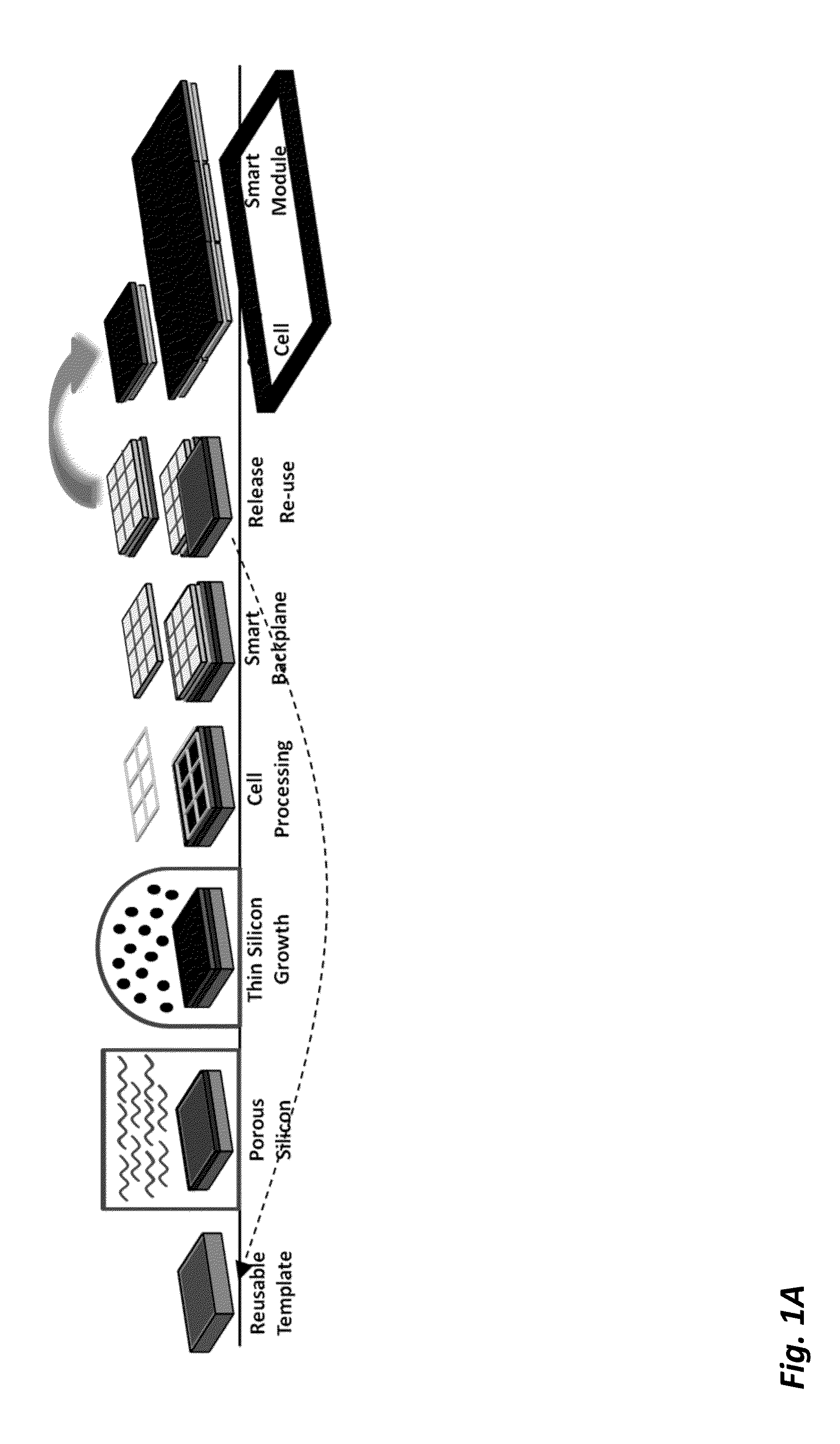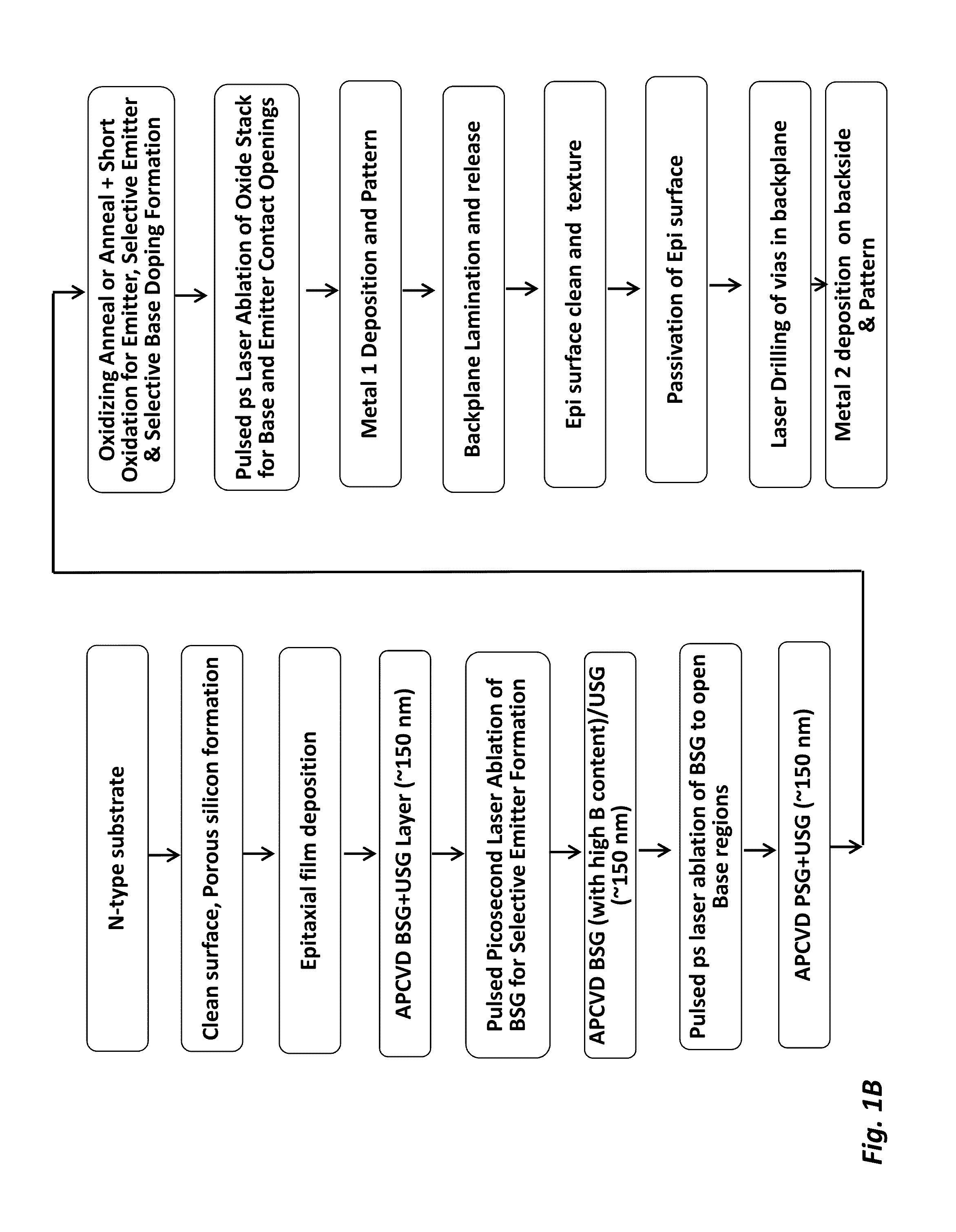End point detection for back contact solar cell laser via drilling
a solar cell and laser technology, applied in the field can solve the problems of limited laser processing in crystalline silicon solar cell fabrication, significant fabrication challenges presented for the back side, and difficult laser processing, particularly laser ablation and drilling, so as to improve the laser processing method of back contact solar cells and eliminate or reduce the cost and fabrication disadvantages
- Summary
- Abstract
- Description
- Claims
- Application Information
AI Technical Summary
Benefits of technology
Problems solved by technology
Method used
Image
Examples
Embodiment Construction
[0030]The following description is not to be taken in a limiting sense, but is made for the purpose of describing the general principles of the present disclosure. The scope of the present disclosure should be determined with reference to the claims. Exemplary embodiments of the present disclosure are illustrated in the drawings, like numbers being used to refer to like and corresponding parts of the various drawings.
[0031]Importantly, the exemplary dimensions and calculations disclosed for embodiments are provided both as detailed descriptions for specific embodiments and to be used as general guidelines when forming and designing solar cells in accordance with the disclosed subject matter.
[0032]And although the present disclosure is described with reference to specific embodiments, such as back contact solar cells using monocrystalline silicon substrates having a thickness in the range of 10 to 200 microns and other described fabrication materials metallization layers, one skilled...
PUM
| Property | Measurement | Unit |
|---|---|---|
| pulse length | aaaaa | aaaaa |
| thickness | aaaaa | aaaaa |
| thickness | aaaaa | aaaaa |
Abstract
Description
Claims
Application Information
 Login to View More
Login to View More - R&D
- Intellectual Property
- Life Sciences
- Materials
- Tech Scout
- Unparalleled Data Quality
- Higher Quality Content
- 60% Fewer Hallucinations
Browse by: Latest US Patents, China's latest patents, Technical Efficacy Thesaurus, Application Domain, Technology Topic, Popular Technical Reports.
© 2025 PatSnap. All rights reserved.Legal|Privacy policy|Modern Slavery Act Transparency Statement|Sitemap|About US| Contact US: help@patsnap.com



